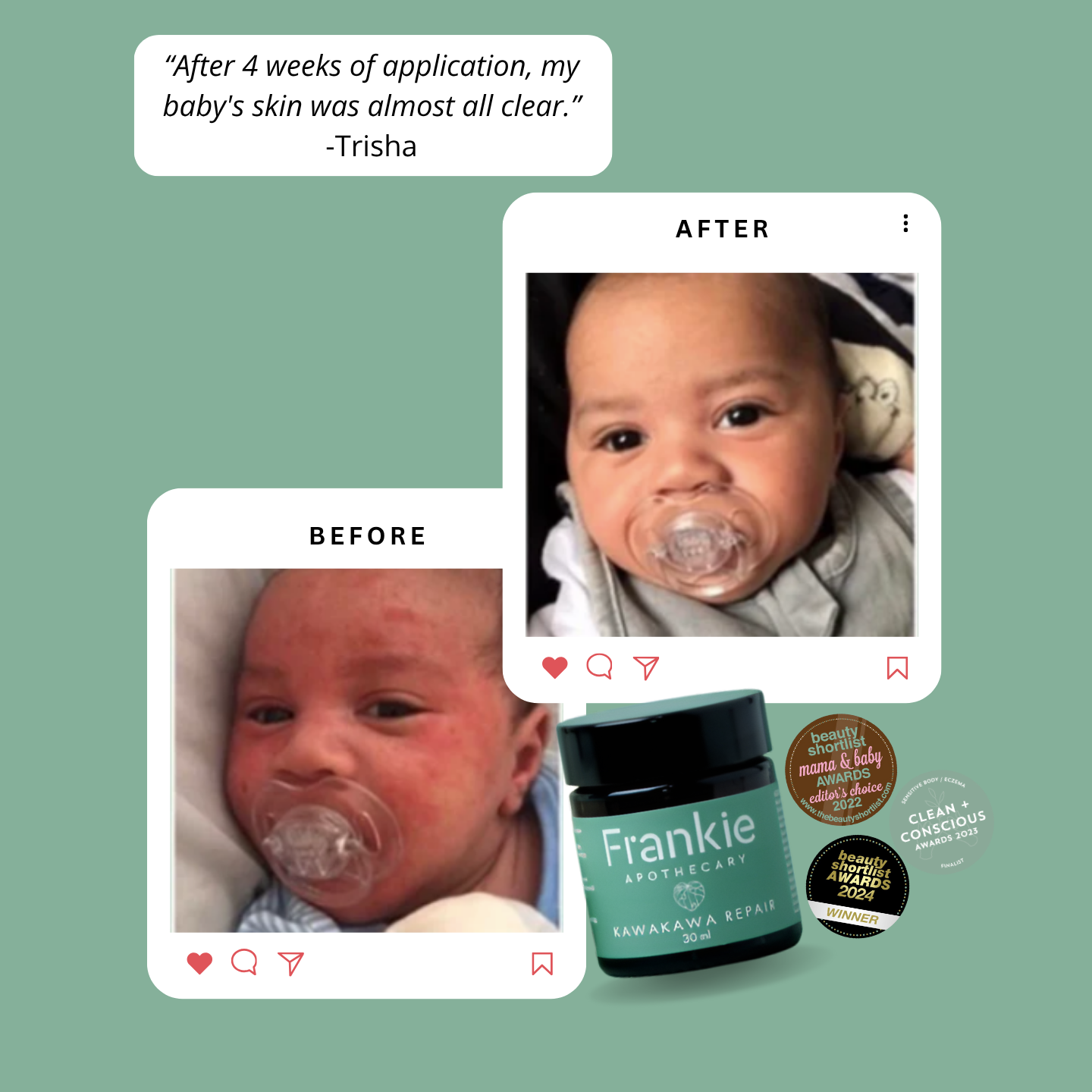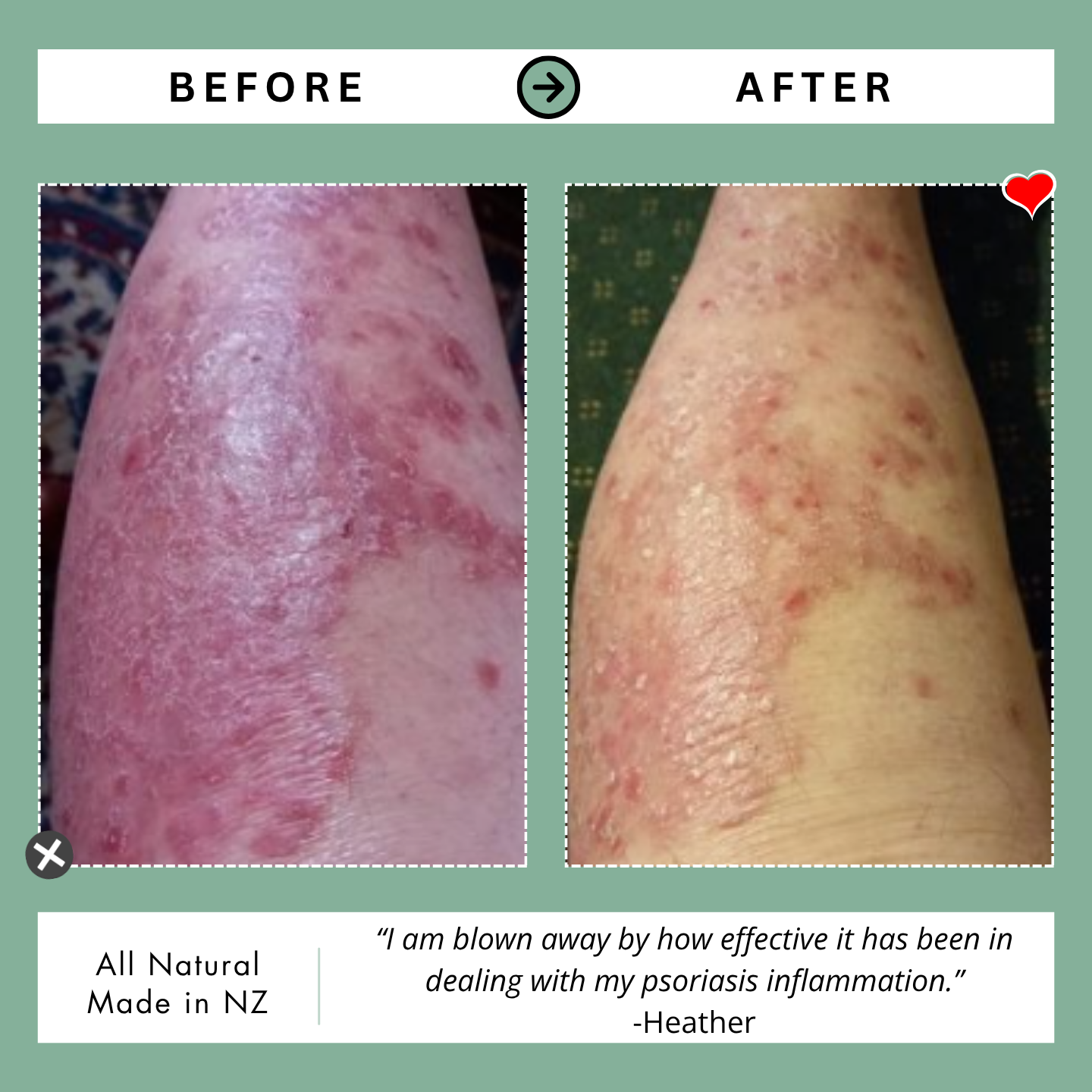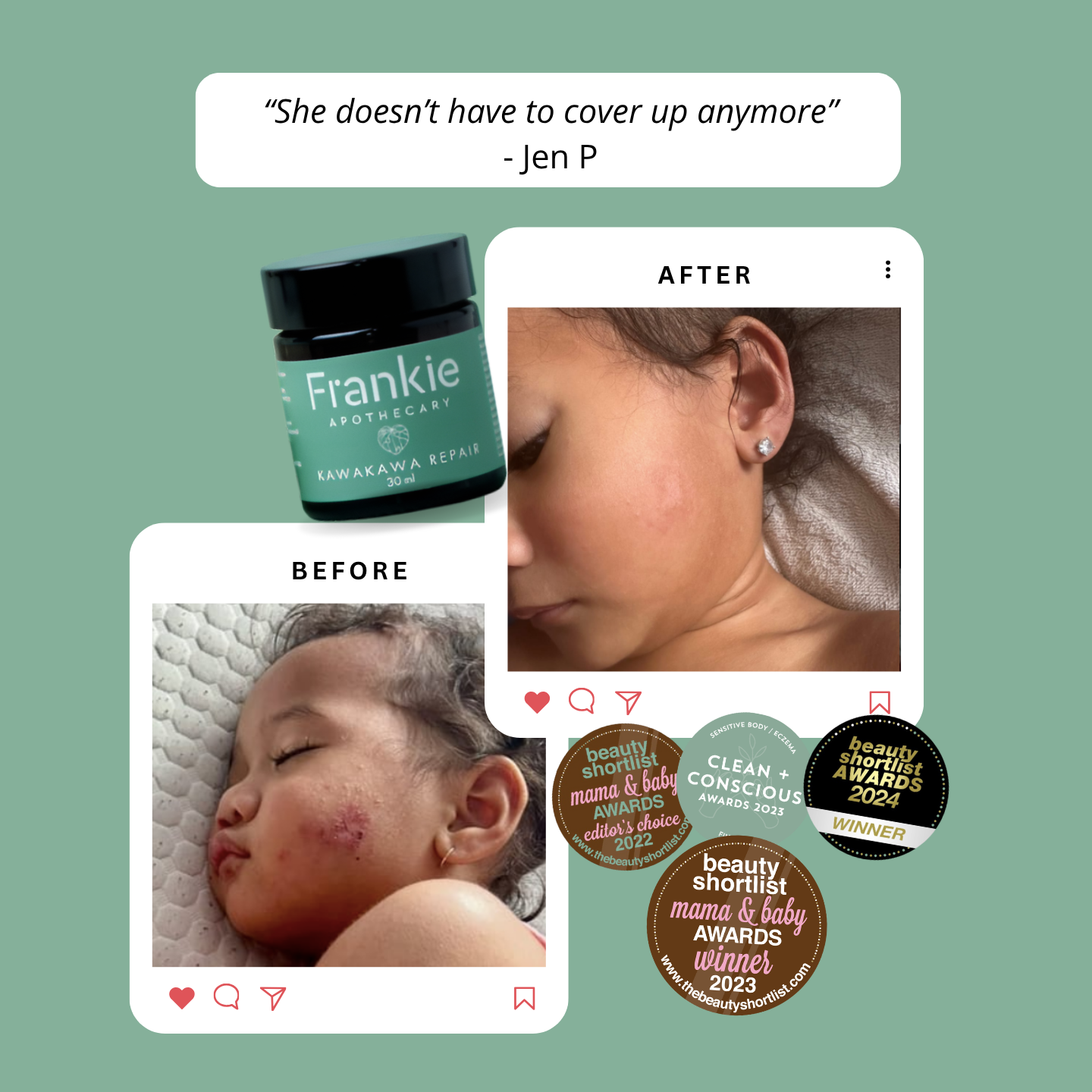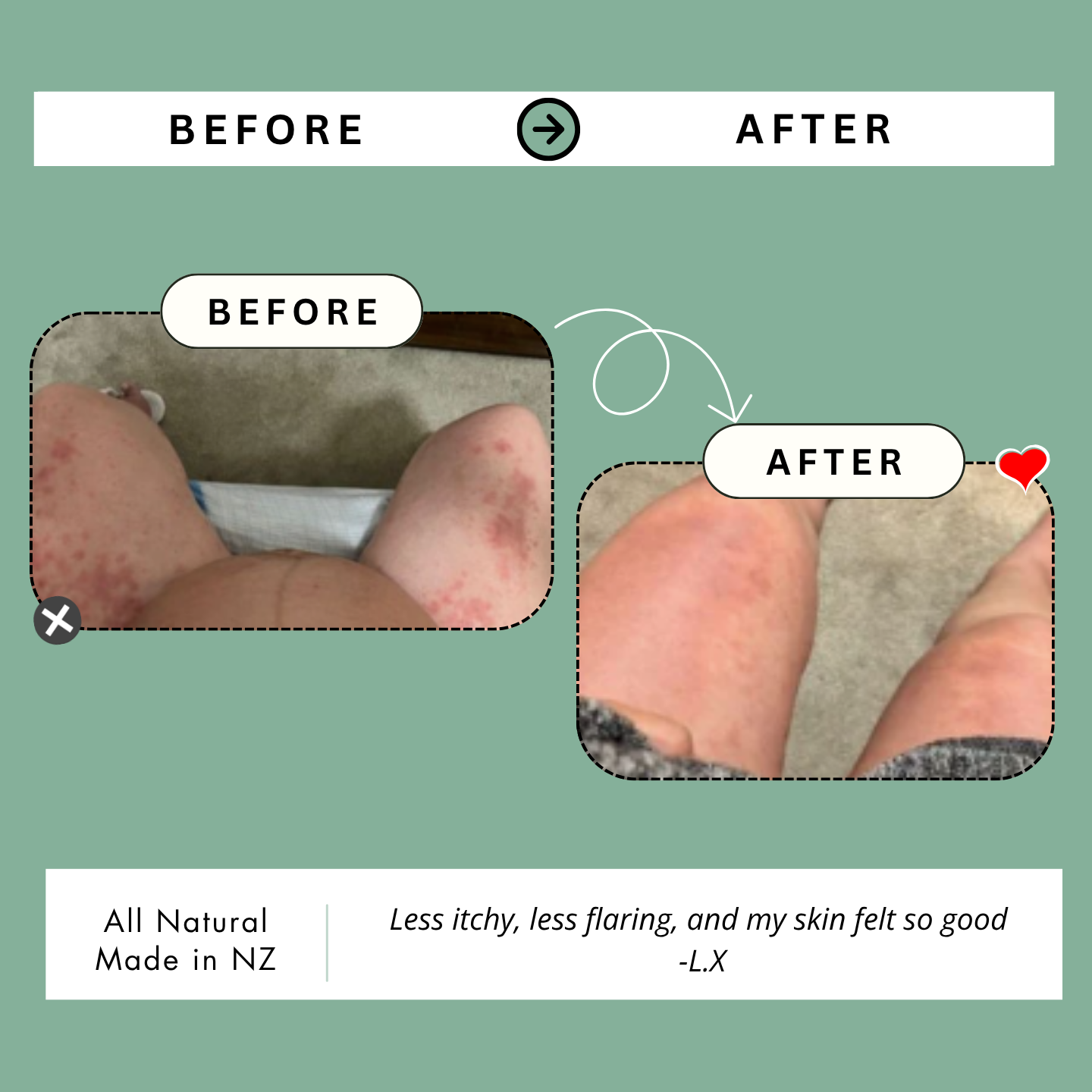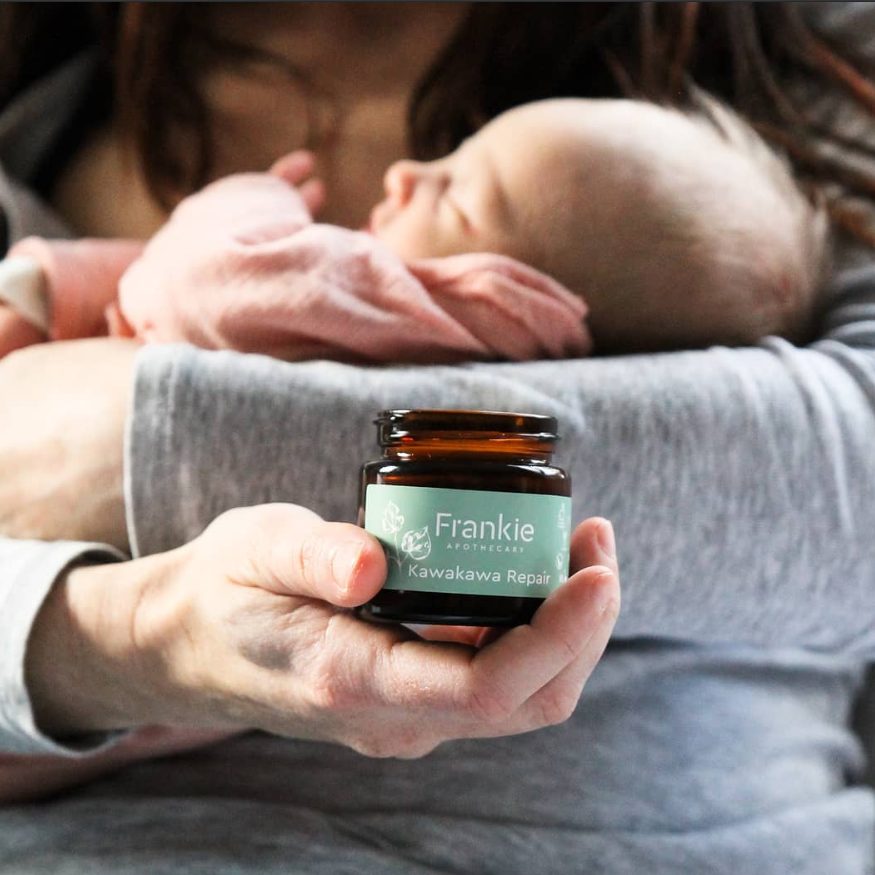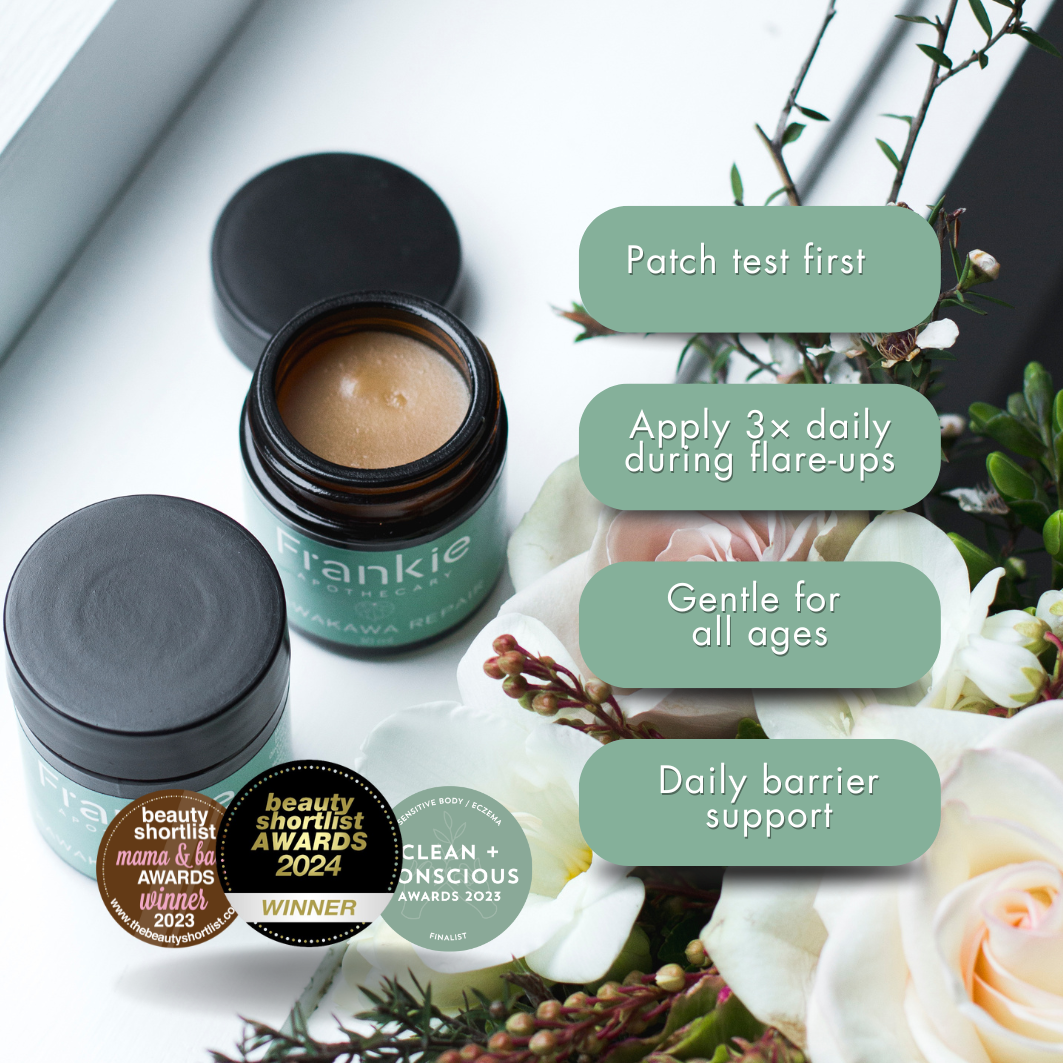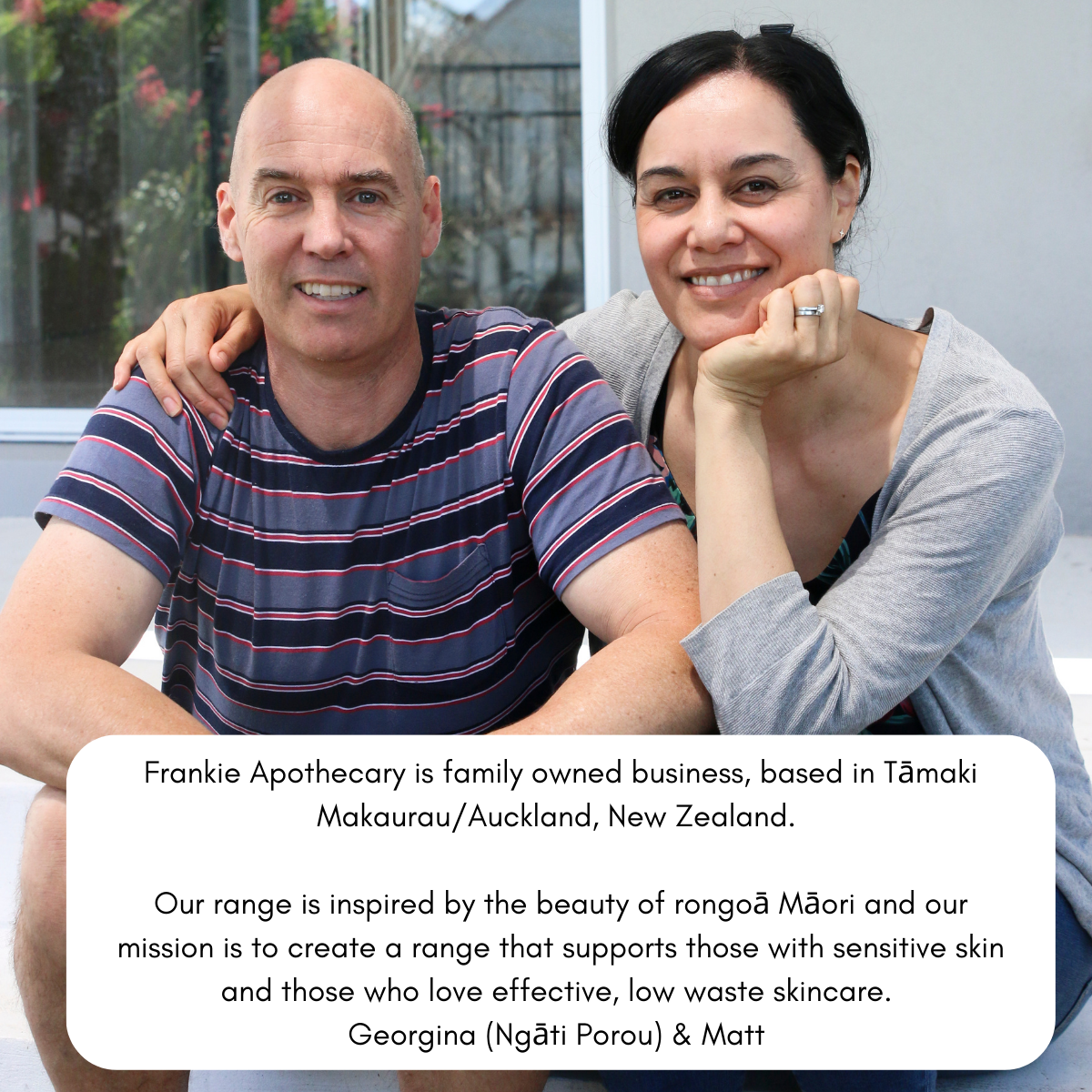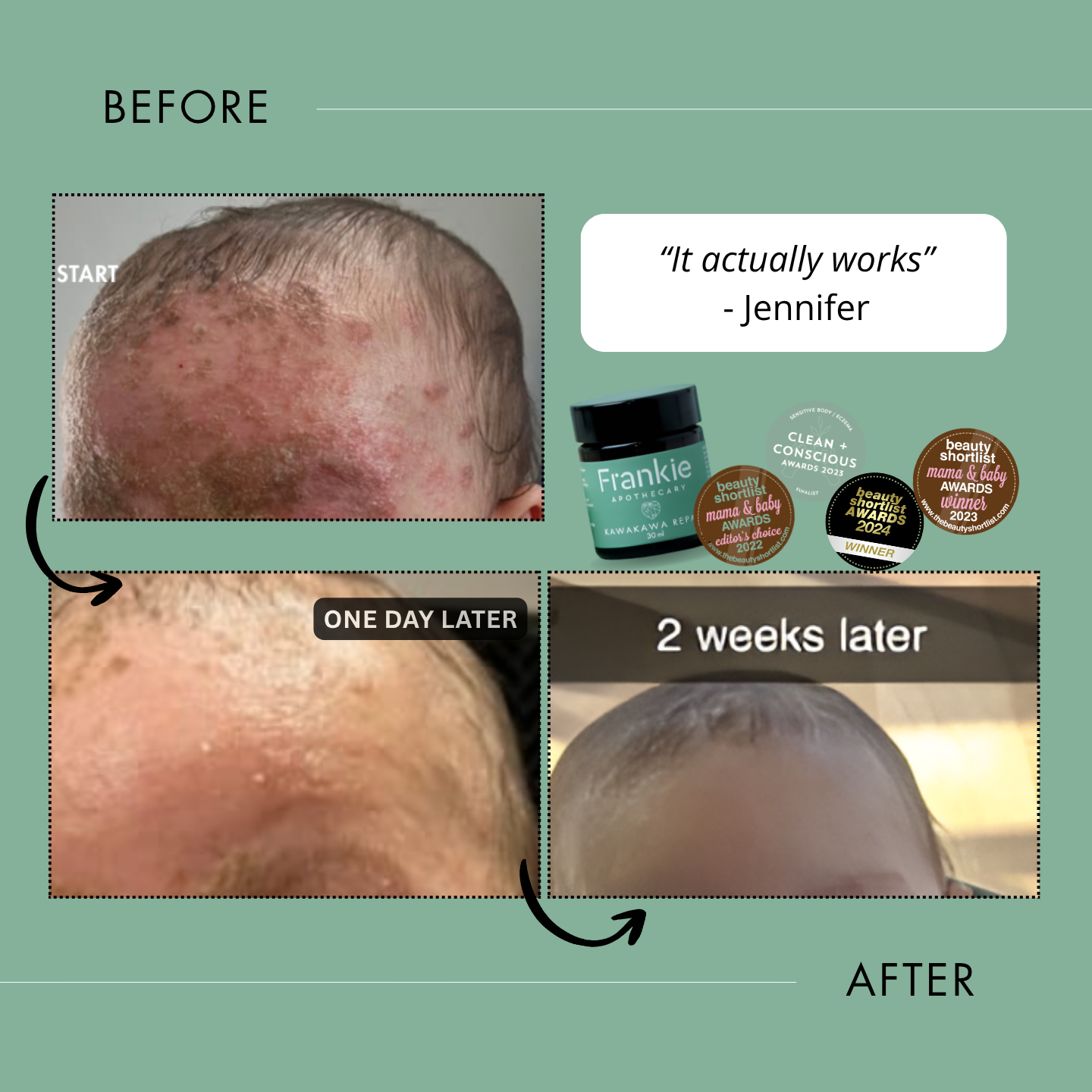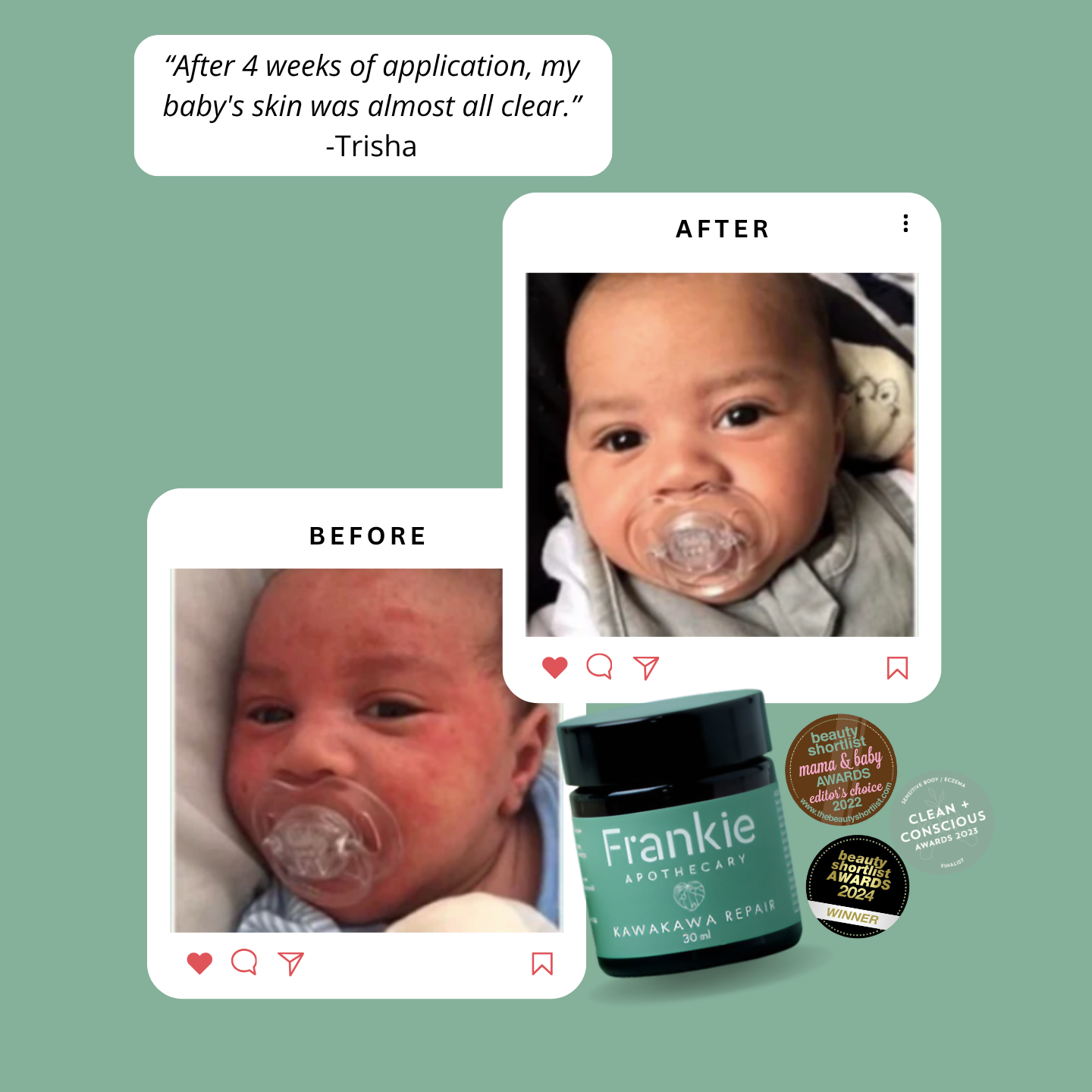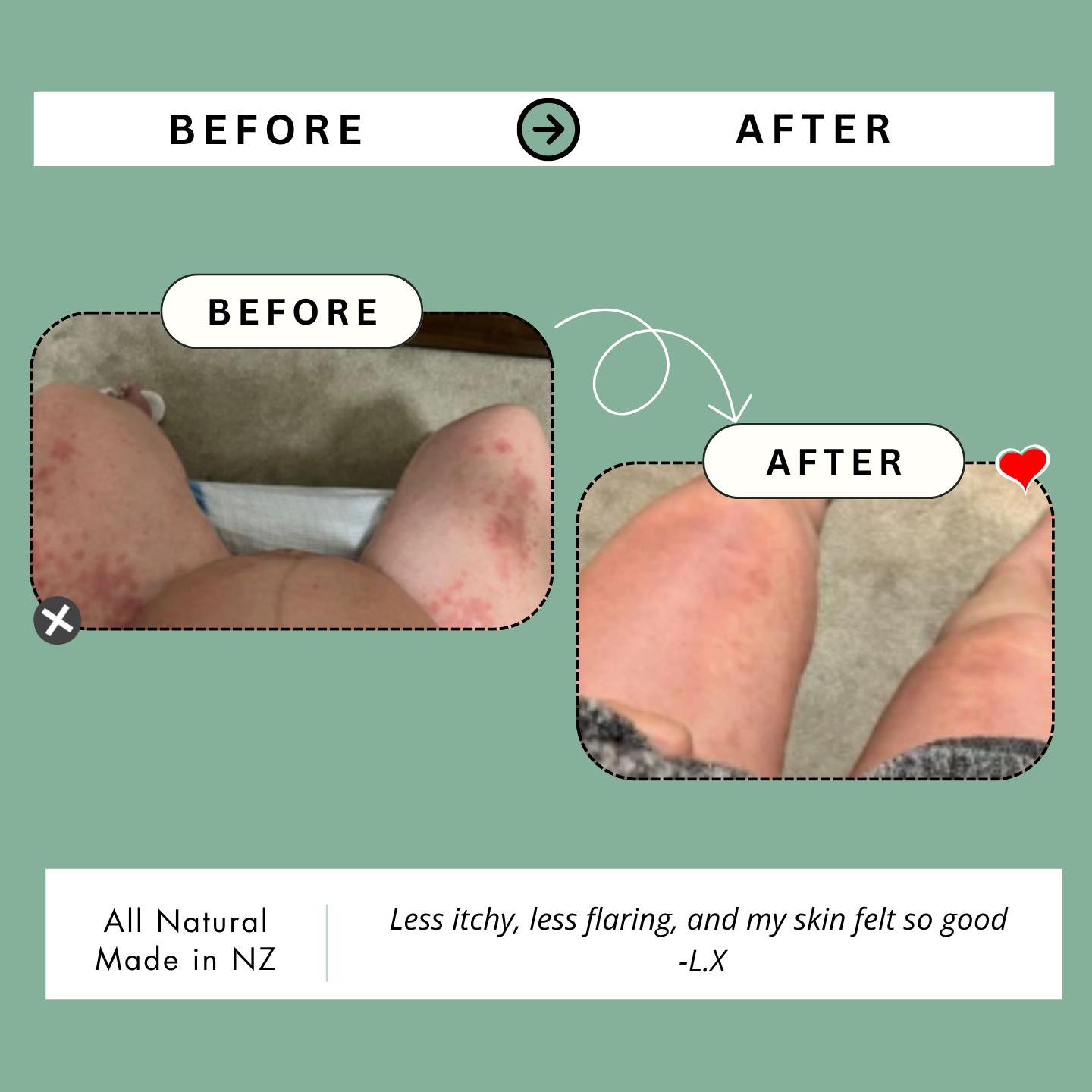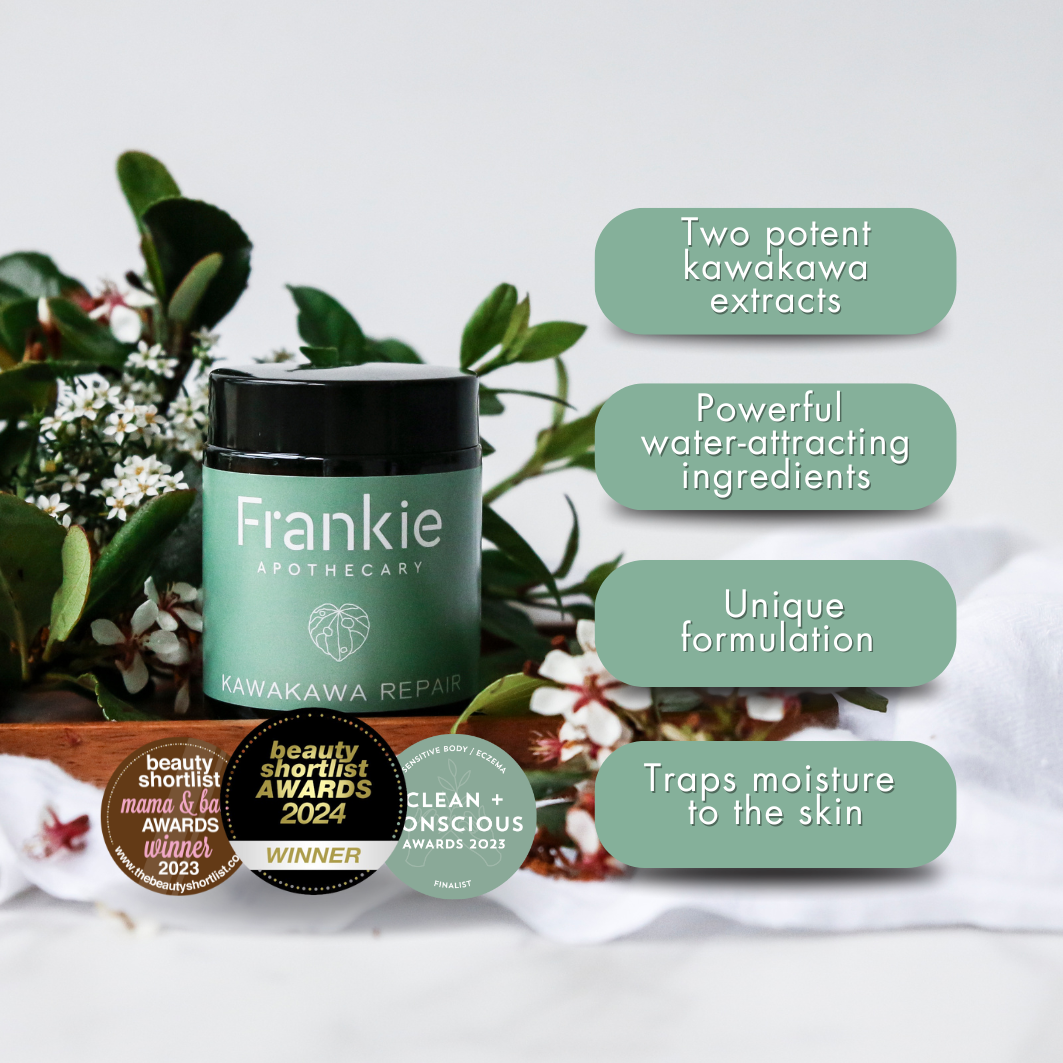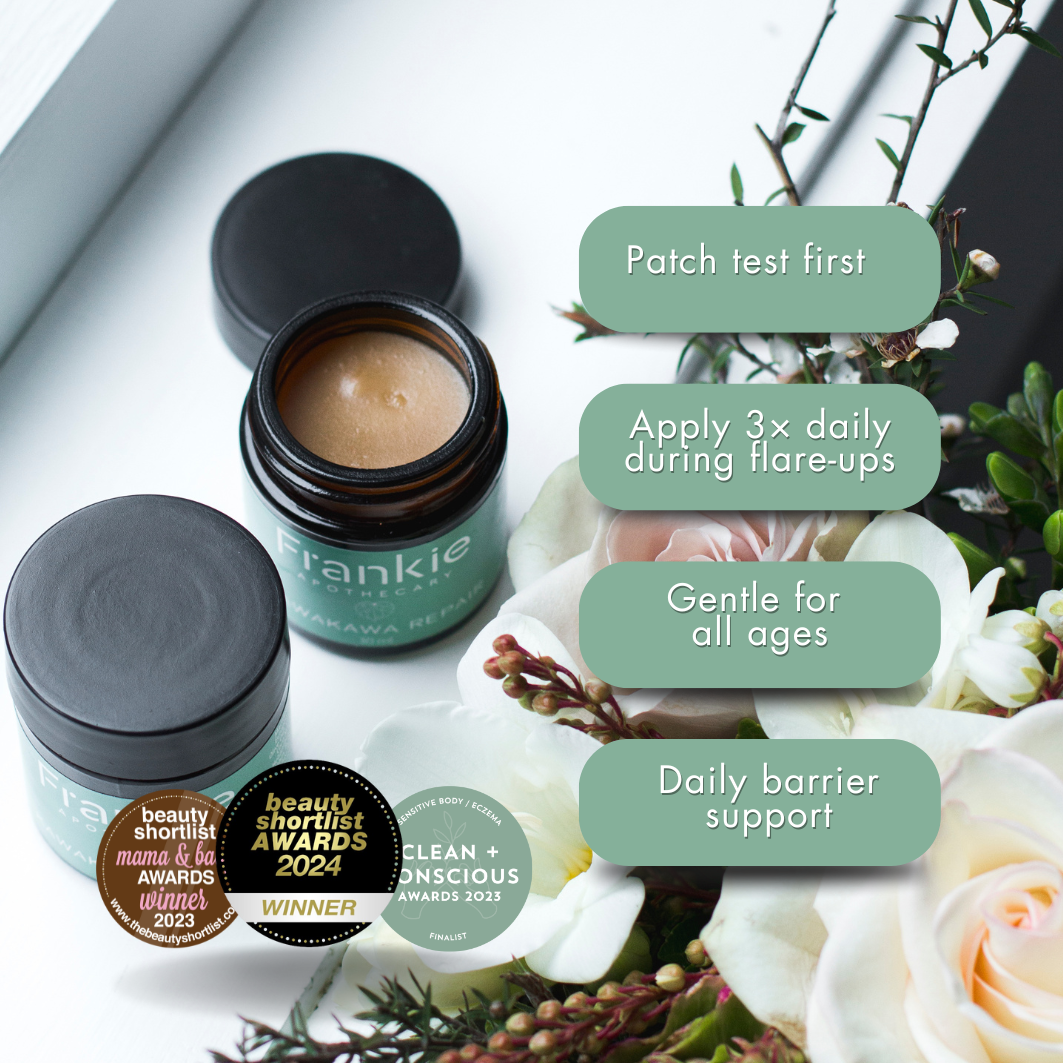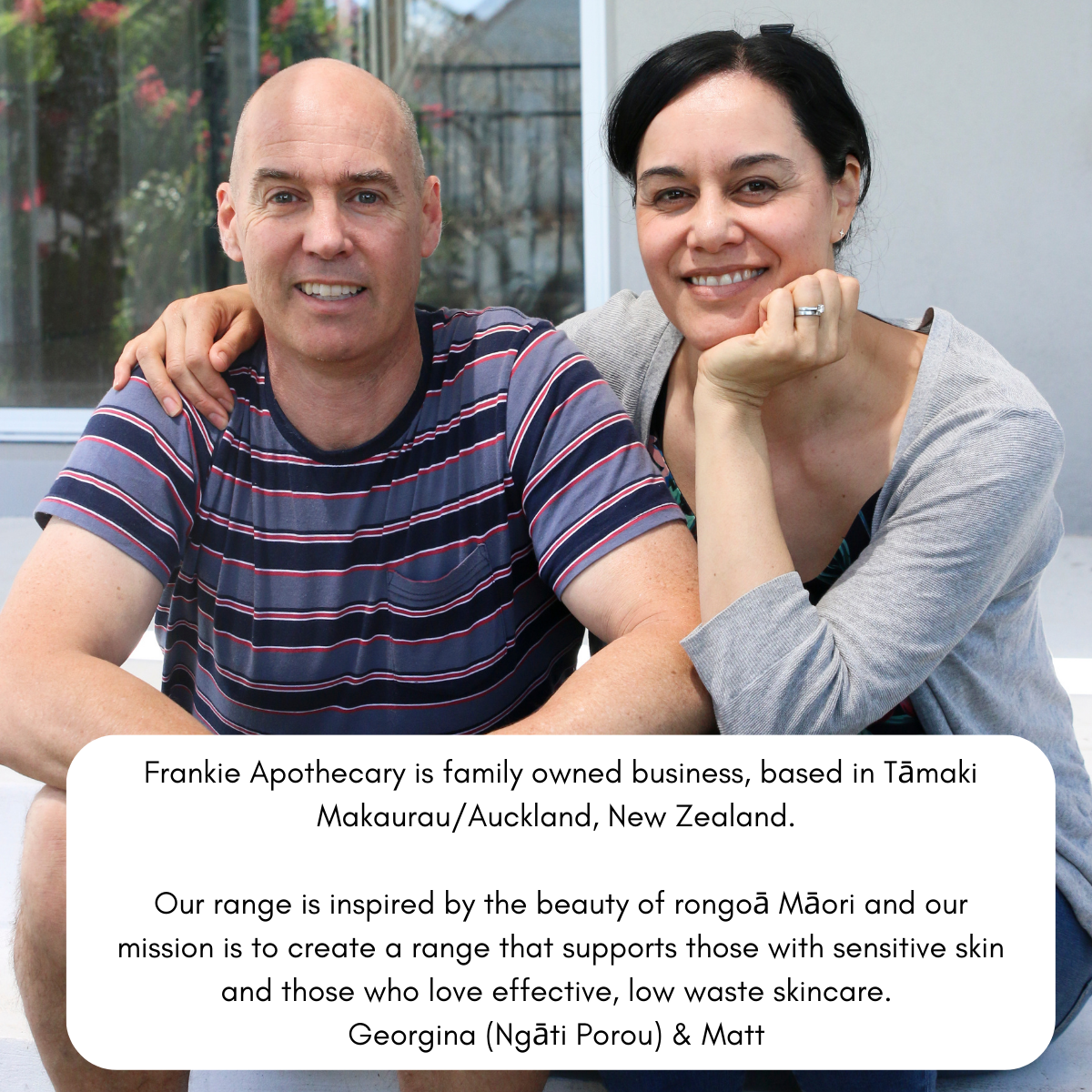By Michele Wilson
Finding an eczema cream that did what it claimed proved impossible when my daughter Eva was struggling through extremely dry, itchy skin caused by her eczema. I tried absolutely every eczema care product on the market. All these eczema creams had little or no effect.
I’ve since learned that not all eczema creams are created equally, and many are just no good at treating eczema-inflamed skin—despite what they suggest.
The market didn't have an eczema cream product that worked for us, so with sheer determination and a heck of a lot of research, this gave me a reason to ultimately create my own eczema balm product. Everyone’s eczema triggers are different, and what works for me may not for you. You may have a skin moisturizer that falls into one of the categories below; if it's effective, I say stick with it!
However, here's some information I found useful when working our way towards effective eczema care that worked for us.
Chemically loaded moisturizers can cause skin with eczema to become more irritated and worsen your eczema flare-ups. Read the back of your moisturizer—if it's unpronounceable or unrecognizable, I say stay clear!
Eczema is caused by an immune response to something either external like the winter cold, synthetic chemicals, or dust mites, or internal like food intolerances or poor gut health. This immune response triggers a series of events that ultimately lead to eczema inflamed skin. They are:
- Transepidermal water loss (TEWL)- think next level water loss from the skin's layers. All skin dries out from time to time, but TEWL is a constant loss of huge amounts of moisture from the skin.
- Once enough water is lost, the outer skin layers are lost. This exposes the inner skin layers to the environment.
- Once these inner skin layers are exposed, the pH of the skin alters. It's this alteration in the skin's pH that causes the skin to become itchy.
- Whenever the itchy skin is scratched, it becomes inflamed.
- This is a constant and vicious cycle because while all of these events are happening, more and more water is being lost from the skin worsening the eczema flare.
- If these steps are not controlled by a really good quality moisturiser then the skin is at risk of becoming infected.
When formulating a moisturizer for Eva, it became obvious to me that I needed something that was going to create a barrier over the skin and trap in moisture, ensuring the above events were not going to happen in the first place. I found that every single product on the market contained water, and lots of it! I knew that it was because of the water content that a strong enough barrier was not being created and ultimately why no product was working. Water-based moisturizers also need to contain preservatives and stabilisers to prohibit mold growth and ensure product consistency and a longer shelf life. The problem with these ingredients for eczema-prone skin is they can also irritate sensitive skin and cause flare ups as they have in Eva’s case.

From the research I've done and a lot of trial and error, my suggestion is stick to unrefined oil based moisturisers or balms. It's important however to ensure your oil based product has the support of a vitamin e. If it doesn't, your oil will become volatile and the actives will be lost quickly - in other words oils go off without vitamin e!
You'll kiss a few frogs before you find your prince – as I found out recently from a sunflower oil product I was given. Within 10 minutes of applying, Eva’s skin was itchy, inflamed and red. Why is this? Many seed oils (like sunflower and safflower) may have the appearance of being natural but are processed using a range of chemicals such as hexane (a petroleum-derived solvent), phosphoric acid and bleaching clay to extract and refine the oil. This is a problem because chemical processing can leave trace residues, reduce beneficial nutrients and antioxidants, increase the risk of the oil going off (creating compounds that may irritate sensitive skin), and strip away natural phytonutrients that support healthy skin barrier function.
Where possible I've found success when I stick to naturally occurring oils such as coconut and olive, which tend not to be heavily refined or processed. Armed with this information and again after finding what worked for me, I created Frankie Kawakawa Repair.
My Kawakawa Balm is 100% plant/oil based, and made from a mix of organic and wild crafted ingredients. It contains a high concentration of nourishing Shea butter, Organic Coconut and Olive oil, healing Calendula, Vitamin E and Kawakawa.
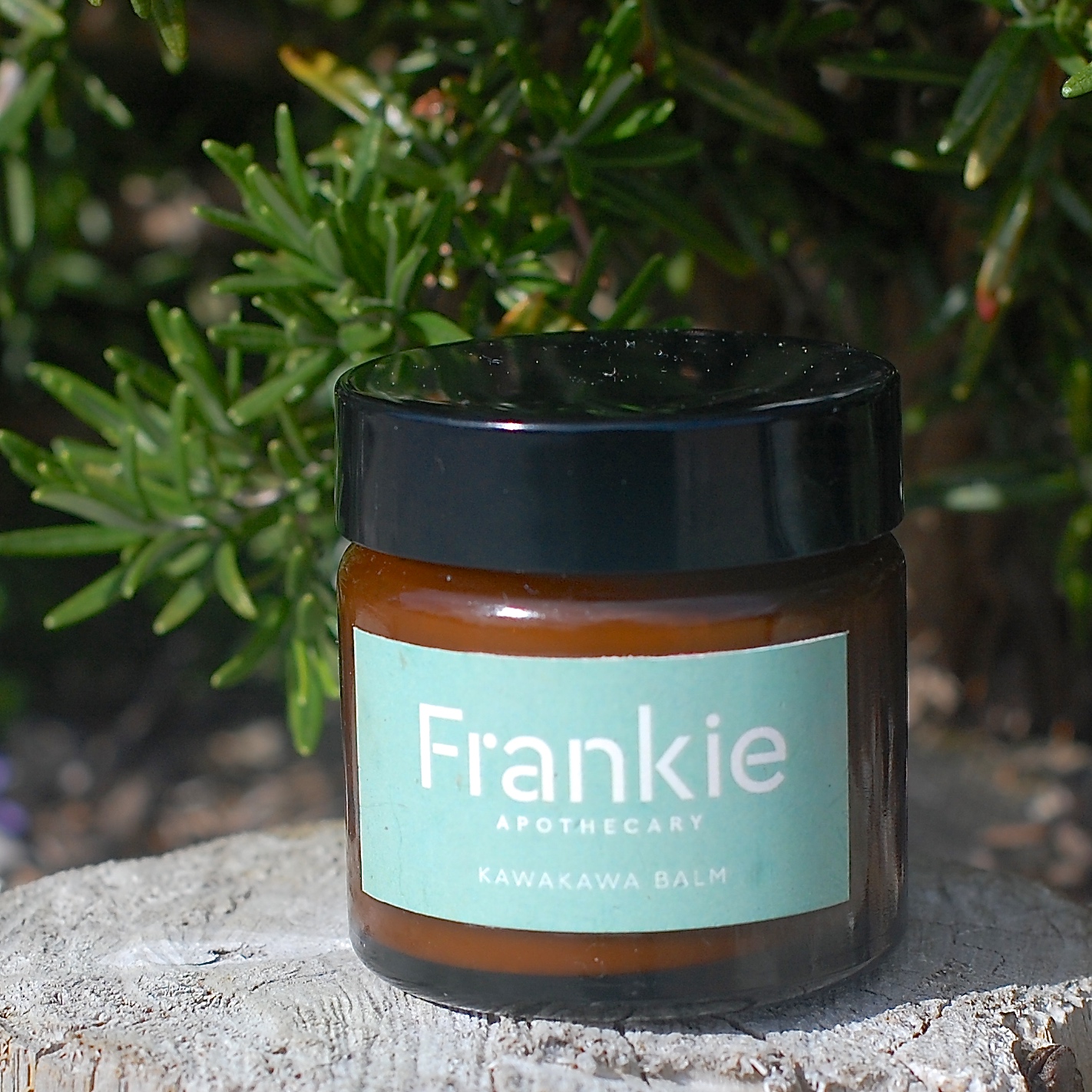
Native to New Zealand the Kawakawa plant is known for it’s healing and medicinal properties, that repair dry and irritated skin. Kawakawa is anti microbial, anti inflammatory and anti fungal so perfect for Eczema, Psoriasis, Nappy Rash, Bites, burns and hives or just dry in need or repair skin.
Our Balm and Sunscreen are packed with Kawakawa extract and oil, which I forage for on our Kawakawa Farm in Mangawhai with my dad and children. I forage for the Kawakawa leaves using tradition techniques which is thought to increase the plants medicinal qualities (as well as its sustainability).
As a result of frequent use (and along with our Soothing Oat Soak) Eva's skin has never been so soft and all inflammation has disappeared.
The results that I am seeing you all send me is truly incredible and has led me on a mission of making sure every mama in the world can see the benefits for their children with our healing Kawakawa Repair.





